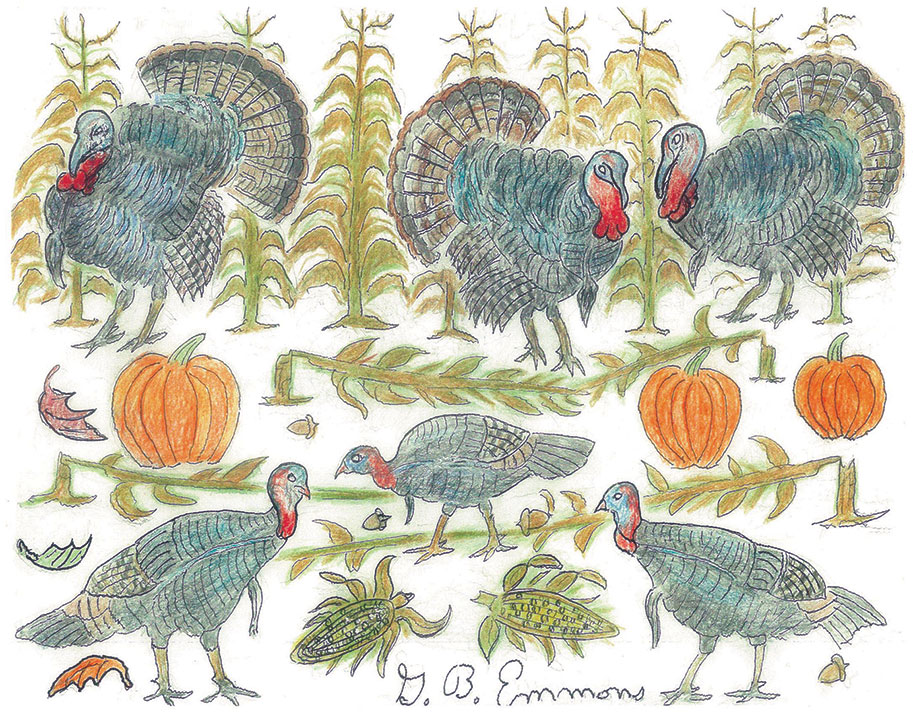The wild turkey has made a remarkable revival in numbers from near extinction in Massachusetts when the last one was killed in the year 1840 until today; the state population is approximately 25,000.
Frequent attempts at stocking over the years failed because pen-raised hens did not have wildlife survival skills to teach their poult, who died off wherever they transplanted. The effort turned a corner in 1980 when flocks were moved from Pennsylvania to Berkshire County, and they expanded so rapidly that a limited fall and spring hunting season was allowed and, 40 years later, is still in effect to this very day.
Over the next quarter-century since 1980, state trap and releases of wild stock moved the population across the state with the final stocking on Cape Cod. According to many officials, they are now almost everywhere except the island of Nantucket. The Indian name for Nantucket means far-off place, which is obviously why they are still not there.
Today in many of our suburban wooded areas they have become a problem with some residents, thus biologists wonder if they were too successful for the turkeys’ own good. Turkeys are social creatures with a pecking order in each flock. The trouble usually begins with younger males coming of age by contending and pushing for position around them. In suburbia, they lose their fear of people, and are known to chase away children waiting on a street corner for a school bus. Sometimes they become obnoxious and ornery around wooded back yards, and managing them by involving animal control officers has become a sticky situation. It is still legal to feed wild turkeys, but authorities do not recommend it because it attracts competition near your house.
Strangely enough, it is the suburbs that have attracted large numbers of turkeys instead of moving into vast remote forests, as might be expected. Agricultural habitat clearings developed by human beings are more to their liking, which seems to be a contradiction of wildlife adaptation in modern times.
Turkeys were very abundant here when the pilgrims were shown in paintings bringing them home from the hunt for their first Thanksgiving, but their numbers declined every year that forests were cleared for agriculture. Extensive hunting also took a toll for almost the following century. When the continental congress of a new nation voted to name the turkey its national bird as recommended by Benjamin Franklin, it was not approved because the turkey loses its head at the first sign of danger and flies scatter-brain in all directions. Instead, the bald eagle was adopted, even though it had a flawed character of regularly stealing prey from ospreys.
The turkey’s final recovery is unique in a country that endangered and decimated the passenger pigeon to extinction, nearly wiping out endless herds of buffalo, as well as two species of whales, the western sockeye salmon, and the eastern Atlantic salmon.
The wild turkey may have risen out of the ashes of stocking failures like a phoenix, but its saving grace may well have been the similarity to its domestic cousin; both have an American image as leading role in Thanksgiving’s historical tradition. It now appears to be right at home at the edge of harvested cornfields, or nearby pumpkin patches, and often close to barnyard habitat.
They would fit in today with other of Mother Nature’s cornucopia of natural blessings for the feast that was celebrated to express thanks for a bountiful harvest. The present wild turkey may still rank with the Indian three sisters of squash, corn, and beans, almost 400 years later.
By George B. Emmons
